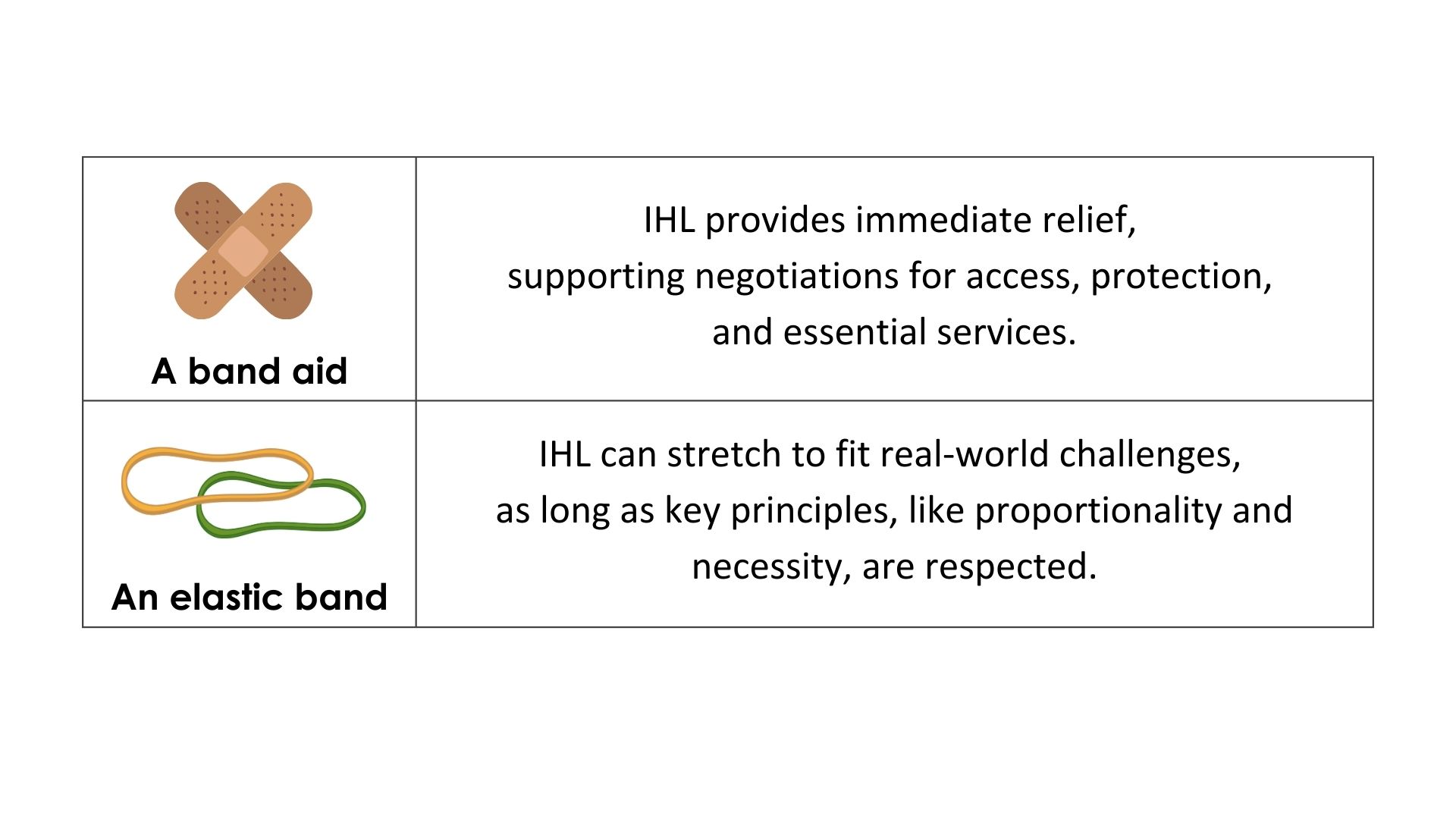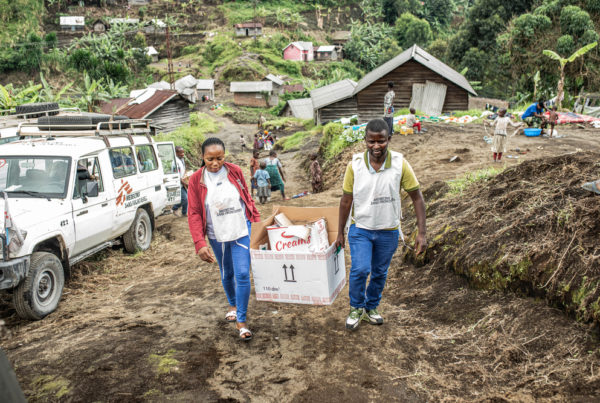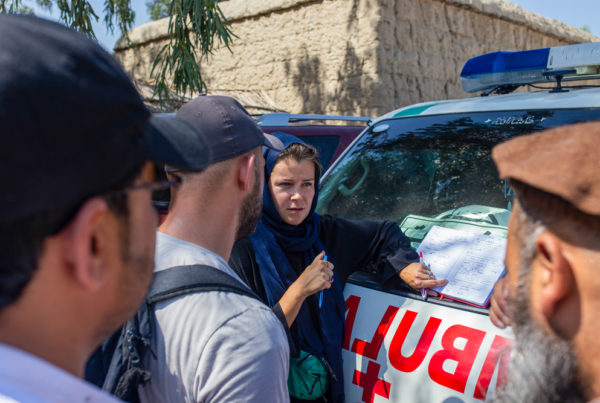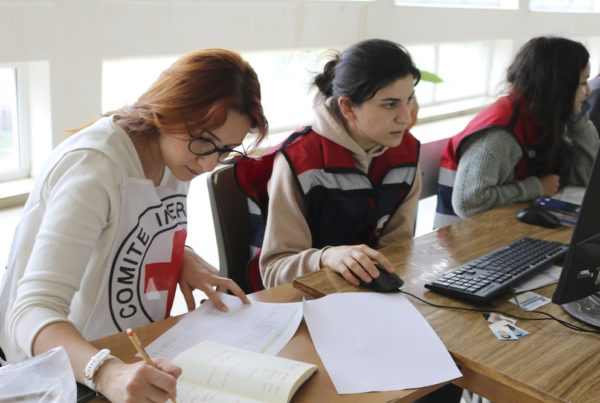
In today’s complex armed conflicts, humanitarian negotiation is one of the few ways to apply international humanitarian law (IHL) on the ground.
While IHL provides legal protections for civilians, it is through negotiation – built on trust, presence, and persistence – that humanitarian actors turn legal norms into tangible outcomes.
In a recent CCHN webinar, experts and experienced field practitioners shared how IHL can be used strategically in humanitarian negotiations.
This article explores those insights, showing how IHL can support access, strengthen protection, and create a shared foundation for dialogue with conflict actors.
Using IHL in negotiations: A foundation, not a fix-all
International humanitarian law offers a shared starting point for dialogue, even when parties to a conflict are sceptical or unfamiliar with it. However, it works best when negotiators adapt how they introduce and apply it.
What works:
- Start with shared principles. IHL’s focus on protecting civilians and reducing suffering can resonate when presented through a humanitarian lens.
- Frame IHL as neutral. Position IHL as a tool that applies to all parties, not as a judgment or a threat. Framing it as neutral and humanitarian rather than punitive can help keep conversations open.
- Use non-reciprocity to your advantage. Remind parties that IHL applies regardless of what others do. This can help reinforce obligations even in tense situations.

Jonathan Somer, Legal Adviser, Danish Red Cross
“We should have the Geneva Conventions in our back pocket, but we shouldn’t slam them on the table.”
In other words, the role of international humanitarian law in humanitarian negotiations is to act as both a compass and a conversation starter.
You can use it to justify access, advocate for protection, and encourage restraint, provided it’s done in a way that resonates with your counterparts.
IHL as a band-aid and an elastic band
IHL doesn’t solve everything. But in humanitarian negotiations, it can offer both structure and flexibility.
Think of it this way.

Recognising this dual nature can help you stay realistic and adaptable. It’s about finding practical steps, not perfect solutions.
Negotiating protection: Building trust before making demands
One of the toughest parts of humanitarian negotiations is raising protection concerns, especially in highly politicised environments. Legal arguments alone rarely succeed. What matters is how they are presented.
Experts repeatedly stress that protection-related dialogue is most successful when it builds on trust. Rather than leading with violations or legal definitions, try grounding your conversation in the humanitarian consequences of actions.
For example, if discussing attacks on civilian infrastructure, start with the impact on families, schools, and access to clean water. Then, you can connect these concerns to relevant IHL provisions.
Strategies that work:
- Tailor your approach. What works in one country won’t work in another. Understand the local political, cultural, and social context before engaging.
- Build trust first. A collaborative, problem-solving approach opens more doors than accusations.
- Avoid blame. Focus on the impact of actions to keep the dialogue open.
- Use access as a starting point. Negotiating access to water, food, or health services can lead naturally to discussions about protection.
- Draw from data. Use patterns rather than isolated incidents. Trends allow for a more objective and less confrontational discussion, which can reduce defensiveness and open space for solutions.
Working with armed groups and de facto authorities
Many humanitarian practitioners ask: Can you negotiate with non-state armed groups under IHL?
Yes, you can – and often must. IHL applies to all parties in an armed conflict, including non-state armed groups and de facto authorities. But negotiating with them requires tact, especially when there are legal or political constraints.
You may face barriers such as:
- A group’s limited awareness of IHL or suspicion about its purpose.
- Fear that complying with IHL signals weakness or loss of control.
- External restrictions like sanctions or counterterrorism laws.
In practice, experienced negotiators use several strategies to navigate these challenges:
- Anchor discussions in shared humanitarian values, not politics.
- Use trusted intermediaries, such as community leaders or religious figures.
- Frame IHL in terms that resonate locally, like moral obligations or cultural norms.
- Highlight mutual benefits, like how protecting civilians can improve discipline or community trust.
Example from the Sahel
An armed group initially rejected references to the Geneva Conventions, seeing them as part of a Western agenda. A humanitarian negotiator turned instead to a local religious leader, who invoked Islamic teachings on the sanctity of life and the protection of women and children. The group agreed to a temporary ceasefire to allow civilian evacuations, not in response to legal pressure, but because the argument was framed in terms they recognised and respected.
While legal frameworks guide the conversation, cultural sensitivity and relationship-building often make the difference.
Bridging legal norms and field realities
Turning legal frameworks into meaningful field-level dialogue is one of the hardest parts of humanitarian negotiations. Success often depends on how well legal principles are translated into locally relevant, easily understood terms.

Many humanitarian actors find it helpful to start with shared values. Whether rooted in religion, tradition, or ethics, these values often mirror the protections found in IHL, such as safeguarding children, treating the wounded, or respecting the dead.
If you’re dealing with potential IHL violations, try approaching them with empathy and clarity. Rather than accusing a group of wrongdoing, describe the consequences of certain actions and ask whether they align with their own values or goals. This can open the door to change, even without formal enforcement mechanisms.
Making protection tangible
Protection is never easy, but it is possible. Across the world, humanitarian negotiators are finding ways to make a difference: gaining access, reducing harm, and strengthening respect for civilians, even in the most unstable environments.
One of the most effective ways to understand what protection means is also the simplest: just ask. When negotiators speak with affected people and ask, “What would make you feel safer?”, the answers are often powerful and deeply human.
These insights don’t just shape programming, they offer the most compelling language to use at the negotiation table. When protection is grounded in lived experience, legal frameworks become more than abstract rules, they become tools for real, resonant change.
Remember…
The most effective humanitarian negotiators know that law alone is not enough. What matters is how you use international humanitarian law as part of a broader strategy grounded in empathy, adaptability, and persistence.
Here are some final lessons to carry with you:
- IHL is a compass, not a weapon. It guides but doesn’t dictate.
- Relationships matter. Trust is the entry point for serious dialogue.
- Progress is incremental. Small wins add up over time.
- Local grounding increases credibility. Connecting IHL to local norms improves buy-in.
- Clarity creates space. Simple, honest language avoids misinterpretation.
As humanitarian challenges continue to evolve, so must the way we use IHL in humanitarian negotiations. Good luck!



